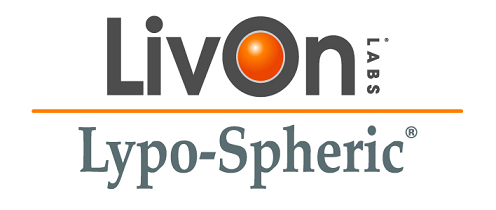未分類
維生素C的其他功用
人們對維生素C最常見的誤解是,這營養主要是為了防止你重蹈17世紀海員的覆轍:他們能幸運地沒有在任何一次海盜搶劫中死亡,也沒有在惡劣天氣下葬身深海,但卻不幸死於壞血病—這被稱為“海洋的禍害”的疾病,也就是醫學上維生素C缺乏症的名稱。
當時的海員如果發現牙齒開始脫落,牙齦受到侵蝕,皮膚開始出現皮疹和流血的潰瘍,身體長出像辮子一樣的卷髮時,他就能得知自己患有這種病了。
如果你每天的維生素C攝入量不足,這些病症也有可能會發生在你身上。但是,維生素C不僅僅是對於避免壞血病有必要的作用; 這種重要的營養對於保持你的健康,和維持身體健康在最佳狀態都至關重要。維生素C還有什麼作用呢?它能防止你過早衰老,對你的支持新陳代謝也十分重要。
維生素C能促進膠原蛋白的合成
維生素C對人體最豐富的蛋白質—˹膠原蛋白˼的合成和維持至關重要。它的連接功能、細長的纖維構成了我們的的皮膚、韌帶、肌腱、軟骨、骨頭、血管、腸道、以及脊椎之間的椎間盤的彈性。此外它同樣也存在於角膜和肌肉組織中。
維生素C與膠原蛋白相關的重要研究表明:
- 維生素C通過促進成纖維細胞(一種具有幫助正常傷口癒合功能,產生膠原蛋白的細胞)的產生和遷移來保護皮膚。
- 維生素C可以防止皮膚過早老化產生皺紋。
- 血管平滑肌細胞對維生素C的增加攝取,促進了I型膠原的合成和成熟。I型膠原蛋白約占人體膠原蛋白總量的90%。
- 高濃度的維生素C促進了IV型膠原的合成,IV型膠原在腎臟、血腦屏障和動脈內膜中具有重要的過濾特性。
維生素C支持基底膜的合成
基底膜是一層薄而粘稠的膜,支持著上皮細胞層(一種排列在整個身體的表面和腔內,就像胃和血管的內膜的組織)。它將腎臟的毛細血管與碗狀的、執行血液過濾第一步的腎小球囊結合。基底膜還將肺毛細血管連接到肺泡上。總而言之,基底膜將我們身體的關鍵部位結合在一起,使它們能履行自己的功能。
維生素C與基底膜的關係如下:
- 維生素C維持基底膜凝膠狀,有助於抑制腫瘤穿過基底膜入侵。
- 維生素C缺乏會減少血管中基底膜成分(IV型膠原蛋白、層粘連蛋白、彈性蛋白)的釋放。
- 維生素C促進了真皮和表皮(皮膚的中、外層)之間的其他重要基底膜蛋白的沉積。
維生素C是肉堿合成的必需物質
維生素C是合成肉堿(一種將脂肪酸運輸到線粒體中所必需的氨基酸)必不可少的輔助因數。這是將膳食脂肪轉化為能量的關鍵一步。
維生素C是神經遞質合成所必需的成分
維生素C直接參與制造促進身體和大腦中神經元和神經細胞之間電流流動的分子。身體對環境的反應能力,以及大腦思考和記憶的能力,都取決於神經遞質。
維生素C促進鈣進入骨組織
高密度骨質的形成和維護需要維生素 C來促進骨骼對鈣的吸收,防止鈣被濾出骨頭,並對抗有抗同化作用的氧化應激。
維生素C與骨代謝的關係還表現在以下幾個方面:
- 維生素C 刺激成骨細胞(一種可以吸收鈣到骨內功能的細胞)的形成。
- 維生素C抑制破骨細胞(一種可以溶解骨組織中的鈣的細胞)的生長。
- 維生素C是一種強大的抗氧化劑,可以對抗骨組織中的氧化應激。
- 要求最佳骨強度的膠原蛋白交聯需要維生素 C。
維生素C維持免疫系統功能
普通行銷宣傳把維生素C的免疫系統益處大事宣揚,認為如果你攝入大量維生素C,就能積極對抗疾病的暴發。而事實上這是誤解維生素C的實際功效。維生素C分子不能抵抗病毒。但是,它能增強我們保持健康所需的免疫系統。
維生素C在許多重要的方面都支援免疫系統。以下是一個快速的概述:
- 干擾素的生產
- 吞噬細胞的功能
- 白細胞產生的細胞因數
- 細胞免疫反應
- 吞噬細胞產生的一氧化碳
- T-淋巴細胞增生
- B-淋巴細胞增生
- 抗體產生和補體活性
- 自然殺傷細胞活性
- 前列腺素的形成
- 淋巴細胞環磷酸鳥苷含量
- 過氧化氫的局部生成和/或與過氧化氫相互作用
- 解毒的組胺
- 中和氧化應激
- 免疫反應
- 黏液溶解的效果
- 抗生素的功能
- 抑制各種形式的T-淋巴細胞死亡
- 抑制神經氨酸酶的產生
維生素C絕不僅僅是一種皮膚補充劑,和免疫系統的維護者。但如果你每天攝取不足夠的份量,它就不太可能達到應有的功效了。
參考文獻
Duarte TL, Cooke MS, Jones GD, “Gene expression profiling reveals new protective roles for vitamin C in human skin cells” Free Radic Biol Med 2009 Jan 1 46(1):78-87.
Hashem MA, et al, “A rapid and sensitive screening system for human type I collagen with the aim of discovering potent anti-aging or anti-fibrotic compounds” Mol Cells 2008 Dec 31 26(6):625-30.
Qiao H, et al, “Ascorbic acid uptake and regulation of type I collagen synthesis in cultured vascular smooth muscle cells” J Vasc Res 2009 46(1):15-24.
Boyera N, Galey I, Bernard BA, “Effect of vitamin C and its derivatives on collagen synthesis and cross-linking by normal human fibroblasts” Int J Cosmet Sci 1998 Jun 20(3):151-8.
May JM, Qu ZC, “Transport and intracellular accumulation of vitamin C in endothelial cells: relevance to collagen synthesis” Arch Biochem Biophys 2005 Feb 1 434(1):178-86.
Saitoh Y, Nagai Y, Miwa N, “Fucoidan-Vitamin C complex suppresses tumor invasion through the basement membrane, with scarce injuries to normal or tumor cells, via decreases in oxidative stress and matrix metalloproteinases” Int J Oncol 2009 Nov 35(5):1183-9.
Mahmoodian F, Peterkofsky B, “Vitamin C deficiency in guinea pigs differentially affects the expression of type IV collagen, laminin, and elastin in blood vessels” J Nutr 1999 Jan 129(1):83-91.
Marionnet C, et al, “Morphogenesis of dermal-epidermal junction in a model of reconstructed skin: beneficial effects of vitamin C“ Exp Dermatol 2006 Aug 15(8):625-33.
Rebouche CJ, “Ascorbic acid and carnitine biosynthesis” Am J Clin Nutr 1991 Dec 54(6 Suppl):1147S-1152S.
Naidu KA, “Vitamin C in human health and disease is still a mystery? An overview” Nutr J 2003 Aug 21 2:7.
Gabbay KH, et al, “Ascorbate synthesis pathway: dual role of ascorbate in bone homeostasis” J Biol Chem 2010 Jun 18 285(25):19510-20.
Yalin S, et al, “Is there a role of free oxygen radicals in primary male osteoporosis?” Clin Exp Rheumatol 2005 Sep-Oct 23(5):689-92.
Park JB, “The Effects of Dexamethasone, Ascorbic Acid, and β-Glycerophosphate on Osteoblastic Differentiation by Regulating Estrogen Receptor and Osteopontin Expression” J Surg Res 2010 Oct 8.
Hie M, Tsukamoto I, “Vitamin C-deficiency stimulates osteoclastogenesis with an increase in RANK expression” J Nutr Biochem 2011 Feb 22(2):164-71.
Sheweita SA, Khoshhal KI, “Calcium metabolism and oxidative stress in bone fractures: role of antioxidants” Curr Drug Metab 2007 Jun 8(5):519-25.
Saito M, “Nutrition and bone health. Roles of vitamin C and vitamin B as regulators of bone mass and quality” Clin Calcium 2009 Aug 19(8):1192-9.
Maehata Y, et al, “Type III collagen is essential for growth acceleration of human osteoblastic cells by ascorbic acid 2-phosphate, a long-acting vitamin C derivative” Matrix Biol 2007 Jun 26(5):371-81.
Pasco JA, et al, “Antioxidant vitamin supplements and markers of bone turnover in a community sample of nonsmoking women” J Womens Health (Larchmt) 2006 Apr 15(3):295-300.
Sugiura M, et al, “Dietary patterns of antioxidant vitamin and carotenoid intake associated with bone mineral density: findings from post-menopausal Japanese female subjects” Osteoporos Int 2011 Jan 22(1):143-52
Ruiz-Ramos M, et al, “Supplementation of ascorbic acid and alpha-tocopherol is useful to preventing bone loss linked to oxidative stress in elderly” J Nutr Health Aging 2010 Jun 14(6):467-72.
Zinnuroglu M, et al, “Prospective evaluation of free radicals and antioxidant activity following 6-month risedronate treatment in patients with postmenopausal osteoporosis” Rheumatol Int 2011 Jan 8.
Content adapted from Primal Panacea by Thomas E. Levy, MD, JD.




